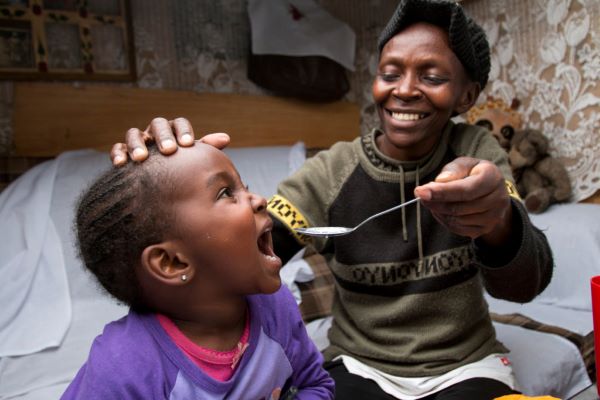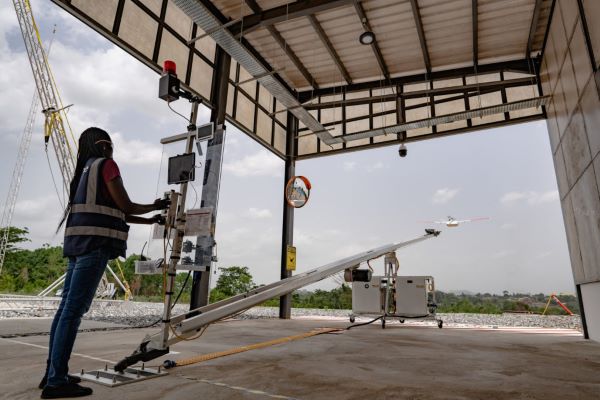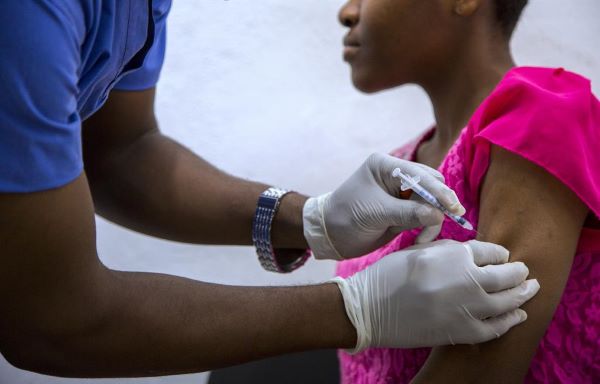Buyers United: How Low- and Middle-Income Countries Can Get a Better Deal on Pharmaceuticals
Buyers United: How Low- and Middle-Income Countries Can Get a Better Deal on Pharmaceuticals

The wider use of pooled procurement in national health systems can help low- and middle-income countries get a better deal on pharmaceuticals – here’s how and why.
The wider use of pooled procurement in national health systems can help low- and middle-income countries get a better deal on pharmaceuticals – here’s how and why.
Low- and middle-income countries are making strides in bolstering their domestic pharmaceutical sectors—evidenced by the recent deal between South Africa’s Afrigen Biologics and Belgium’s Univercells, to develop the first African-owned COVID-19 vaccine.
On the demand side, governments can do more to get better deals when they do need to purchase drugs outside their borders. They should consider banding together their negotiating power via a category of supply chain models known as pooled procurement.
South Africa’s experience with antiretrovirals for HIV illustrates the benefits buyers can reap. The country has cut the price of the life-saving HIV treatments by 68% since 2011 using a national pooled procurement mechanism that combines the buying power of the country’s nine provinces. This has opened the way for millions more people to access HIV/AIDS treatment every year with the help of affordable antiretrovirals.
The mechanism is underused but can be a powerful tool to help drive down drug costs, which are often a significant slice of health care budgets in lower-income countries.
Such an approach will surely boost access to care and promote quality assurance.
The power of the buyers is facilitated by aggregating their combined knowledge, a harmonized approach, and consequent collective demand. That power is then used to negotiate terms of supply.
Suppliers, in return, receive greater visibility into production demands, allowing them to maximize capacity and improve product movement.
How it works in South Africa

Here’s how it works in South Africa: The provinces aggregate their demand into a national three-year contract, with multiple awards per product and minimum volume pledges for vendors. To stimulate a dynamic market, price preferences are given for local producers and new market entrants.
The results? The Clinton Health Access Initiative’s HIV Market Study shows that the price per unit the South African government pays is lower than what many multilaterals such as the Global Fund and even PEPFAR pay. A variety of local manufacturers have invested in local production capacity.
The benefits for buyers are clear, but vendors may need convincing to take part. Highlighting the predictability of volume, duration of contracts, and security of funding can help.
On the donor side
In the international donor arena, among the most high-profile pooling examples is Gavi, the Vaccine Alliance. Gavi’s private-public partnership comprises a range of players, including the World Health Organization, the Bill & Melinda Gates Foundation and governments such as the U.S., to pool demand for vaccines for the world’s neediest.
Gavi’s scale has achieved cost savings that have spurred countries to expand their immunization programs, thus broadening the potential market into which vendors can sell. That in turn has inspired manufacturers to invest in scaling up production and to introduce new vaccines.

Pooled procurement should not be a ‘race to the bottom’
At the national level, the most efficient pooling systems are often composed of members at similar levels of economic development. Notably, where one province is economically dominant in the South Africa example, this has proven to be an obstacle to developing regional pooling initiatives across the Southern African Development Community.
Cross country pooling will require a more concerted focus on regulatory harmonization, an intended priority of the newly-minted African Medicines Agency.
Additionally, a race to the bottom in terms of price shouldn’t be the targeted outcome. It carries the risk of encouraging substandard medicines or even vendors leaving the market. A focus on price alone may also lead to a concentrated marketplace with too few suppliers dominated by big players.
The pandemic was a wake-up call in this regard, for example, when broken supply chains and the diversion of India’s vaccines for domestic use left many African countries counting on the procurement and distribution of Indian vaccines via COVAX without doses.
Developing stronger, country-led procurement systems
Also, big funder-controlled pools like UNICEF and the Global Fund have historically tended to dominate decisions on timing, quantity, and standards. That dynamic can impede the development of strong, country-led procurement systems.
Rather, donors or buyers should seek to maintain a healthy market whereby suppliers want to remain in the business given the potential for volume. This focus moves away from a given set price for a given commodity and realizes there may be a variance, albeit small, between suppliers to keep them in the game.
All of this underlines the importance of diversified procurement from multiple sources.
Such a shift in approach is needed to empower countries to work on their own or partner with peers and to reward local industry development.
Despite these challenges, the upsides far outweigh these potential hurdles.

Using pooled procurement to tackle NCDs
The South Africa example shows what can be achieved in HIV. Extending the approach to more conditions through pooled procurement represents a new frontier of opportunity.
Noncommunicable diseases (NCDs) like cancer and diabetes are on the rise and affect swathes far greater than HIV. They account for 800,000 deaths annually in the world’s poorest countries—more than HIV, tuberculosis and maternal health combined.
To be sure, pooled procurement is not a panacea to achieve a resilient, effective health system.
But focusing only on the supply side of the equation will solve one major problem: availability.
By banding together, buyers in low- and middle-income countries can work toward achieving greater equity and access in purchasing life-saving pharmaceuticals.